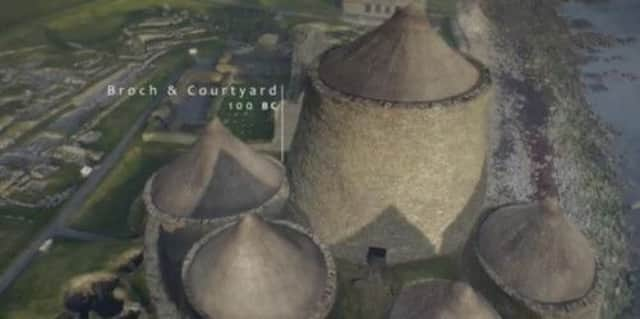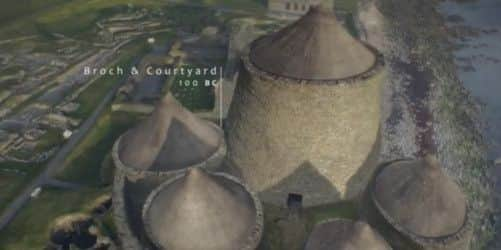Video: recreating the historic Jarlshof settlement


But now light has been shed on how the Shetland settlement of Jarlshof would have appeared during various stages of occupation thanks to an innovative project which married new aerial photography with computer generated reconstruction.
The film was based on photographs taken from a kite-suspended camera with the project supported by Historic Scotland, who manage the site, and completed at Duncan of Jordanstone College of Art and Design, University of Dundee.
Advertisement
Hide AdSpeculative reconstructions of lost buildings were based on kite aerial photographs from a number of other sites across Scotland - including Mousa Broch - and were completed in collaboration with Alice Watterson, Glasgow School of Art.


The project was carried out by Kieran Baxter as part of his PhD studies at Duncan of Jordanstone College of Art and Design, University of Dundee.
Keiran said the project presented a number of challenges particularly the close proximity of the site to Sumburgh airport.
He said: “As a main case study for my research into low altitude aerial photography as a tool for heritage visualisation I chose to use Jarlshof, an ancient settlement site in the Shetland islands. There are many reasons for choosing this specific site- it’s dramatic location, complex four and a half thousand year chronology and juxtaposition of irregular prehistoric architecture represents a challenge for both survey and digital interpretation.
“The main problem for kite flying at the site was it’s location just 350 meters from the runway at Sumburgh, the main airport for the Shetland Islands. To take kite aerial photography within a controlled air traffic zone would mean working closely with the demands of the local Air Traffic Control.
“In the months before my field trip I was put in touch with the senior air traffic controller at Sumburgh. After establishing the details of the location, the height I would be flying at and the periods I would be flying for, permission was granted at the discretion of the air traffic controller on duty at the time, with the provision that I would be able to land all of my equipment on request if necessary.”
History
Advertisement
Hide AdMuch of the Jarlshof settlement remained undiscovered until it was uncovered by a violent storm at the end of the 19th century.
The earliest remains on the site are late Neolithic houses, followed by Bronze Age houses.
Advertisement
Hide AdThe Bronze Age settlers left evidence of several small oval houses with thick stone walls and various artefacts including a decorated bone object. The Iron Age ruins include several different types of structure including a broch and a defensive wall around the site. The Pictish period provides various works of art including a painted pebble and a symbol stone.
Jarlshof boasts an impressive Norse settlement possibly originating in the 9th century. The earliest longhouse was in use for several generations, being modified and lengthened over time. The settlement expanded with the construction of further longhouses, barns and byres, but by the 13th century this had been replaced by a Medieval farmstead, comprising a farmhouse, barn and corn-drier.
From 1592 Sumburgh was leased to William Bruce of Symbister. Between 1604 and 1605 the estate fell into the possession of Earl Patrick but soon reverted back to the Bruce family. The property was ransacked by Earl Patrick in 1608 and reduced to ruins by the end of the century. The stones in the courtyard are believed to mark the graves of shipwrecked sailors.
The most visible structures on the site are the walls of the Scottish period fortified manor house, which inspired the name “Jarlshof” that first appears in an 1821 novel by Walter Scott.
The film is now on display in the museum at Jarlshof where it can be seen to full effect accompanied by an exploration of the site itself. More of the story and images behind the project can be found at www.topofly.com/jarlshof .